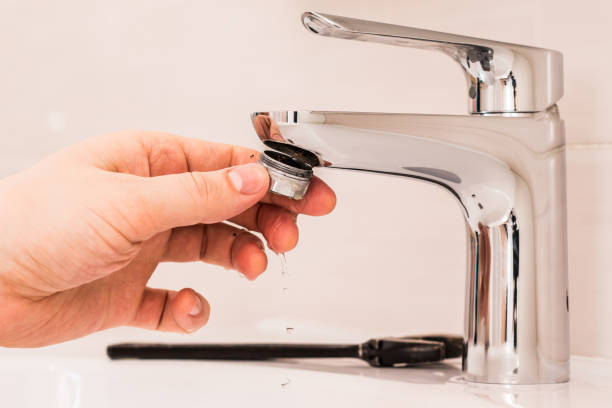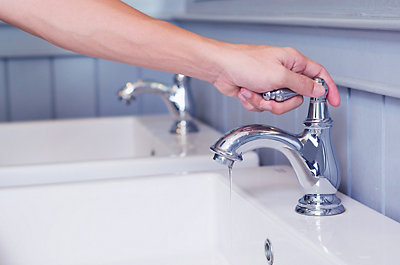Reasons Why It's Crucial to Fix a Broken Faucet
Reasons Why It's Crucial to Fix a Broken Faucet
Blog Article
What're your opinions on Leaky Faucets: Why They Happen & What to Do About Them?

Dripping faucets could appear like a small trouble, yet their influence exceeds simply the annoyance of the sound. From drainage to incurring unneeded monetary prices and health and wellness risks, disregarding a leaking faucet can cause numerous repercussions. In this write-up, we'll delve into why it's crucial to resolve this common family problem without delay and efficiently.
Wastage of Water
Ecological Impact
Trickling faucets contribute significantly to water waste. According to the Environmental Protection Agency (EPA), a solitary faucet leaking at one drip per secondly can squander more than 3,000 gallons of water per year. This not just strains water sources yet also impacts ecosystems and wildlife dependent on them.
Financial Expenses
Boosted Water Bills
Beyond the environmental impact, trickling faucets can pump up water expenses significantly. The accumulated waste in time translates into higher utility costs, which might have been prevented with prompt repairs.
Prospective Property Damage
Furthermore, extended leaking can cause damage to components and surface areas bordering the tap. Water build-up can cause staining, rust, and also structural issues if left unattended, resulting in added repair work costs.
Health and wellness Concerns
Mold and Mold Development
The consistent presence of wetness from a leaking faucet develops an ideal setting for mold and mildew and mildew development. These fungi not only jeopardize indoor air high quality but likewise posture health and wellness risks, specifically for people with respiratory system problems or allergic reactions.
Waterborne Illness
Stagnant water in dripping faucets can end up being a breeding ground for germs and other microorganisms, boosting the danger of waterborne illness. Contaminants such as Legionella bacteria flourish in stationary water, potentially leading to severe illnesses when ingested or inhaled.
Do it yourself vs. Expert Repair
Advantages and disadvantages of Do It Yourself Repair
While some might try to fix a trickling faucet themselves, do it yourself repair services come with their very own set of difficulties. Without proper understanding and tools, do it yourself efforts can intensify the concern or bring about insufficient repair work, extending the trouble.
Benefits of Working With a Professional Plumber
Employing a professional plumber guarantees that the underlying reason for the dripping tap is addressed efficiently. Plumbing technicians have the proficiency and tools to diagnose and repair faucet problems efficiently, saving time and minimizing the risk of more damages.
Step-by-Step Overview to Fixing a Dripping Tap
Devices Needed
Before trying to take care of a leaking tap, collect the required devices, including a flexible wrench, screwdrivers, substitute components (such as washers or cartridges), and plumber's tape.
Usual Tap Issues and Their Solutions
Recognize the sort of faucet and the particular problem creating the drip. Usual troubles include worn-out washers, corroded valve seats, or damaged O-rings. Refer to manufacturer directions or on-line tutorials for detailed assistance on fixings.
Preventive Measures
Routine Upkeep Tips
To stop trickling taps, perform routine maintenance such as cleansing aerators, inspecting for leakages, and replacing damaged components without delay. Additionally, take into consideration setting up water-saving tools or updating to a lot more reliable components.
Relevance of Prompt Services
Attending to leaking taps as soon as they're seen avoids more water waste and prospective damage, inevitably saving both water and cash in the future.
Influence On Residential Or Commercial Property Worth
Understanding of Well-Maintained Building
Maintaining a residential or commercial property in good condition, consisting of resolving upkeep issues like dripping faucets, enhances its regarded value and desirability amongst possible buyers or renters.
Impact on Resale Worth
Properties with well-kept plumbing components, consisting of taps, command greater resale worths in the property market. Dealing with dripping taps can contribute to a positive impact throughout residential property examinations and arrangements.
Environmental Duty
Private Payment to Conservation
Taking responsibility for dealing with trickling faucets aligns with wider efforts toward water conservation and ecological sustainability. Every individual's activities jointly make a considerable effect on maintaining priceless sources.
Lasting Living Practices
By prioritizing timely repairs and embracing water-saving routines, individuals contribute to lasting living practices that benefit both existing and future generations.
Conclusion
Attending to a trickling faucet exceeds plain ease; it's a necessary action toward saving water, decreasing financial expenses, and safeguarding wellness and residential or commercial property. Whether with DIY repair services or specialist support, doing something about it to fix dripping taps is a small yet impactful means to advertise responsible stewardship of resources and add to a much healthier, extra sustainable future.
How to Fix a Dripping or Leaky Faucet
A leaking faucet is one of the most common problems that homeowners encounter, but it being commonplace doesn’t make it any less annoying. The constant drip drip drip of a leaking bathtub faucet, showerhead, or sink tap can disturb your home’s serenity. Left neglected, a dripping faucet can also result in higher water bills and discoloration or mold growth in your sink or plumbing fixtures.
Fortunately, you don’t have to be a trained plumber to know how to stop a dripping faucet. With some basic tools, replacement parts, and a little patience, leaky faucet repair is a breeze. In this article, we’ll explain what causes dripping faucets and how you can fix them.
What Causes a Leaking Faucet?
Kitchen and bathroom faucets come in all manner of designs, but most involve some combination of valves, O-rings, seals, and washers. The O-ring is usually the weakest link, but any one of these pieces can wear down over time. Heat, moisture, temperature fluctuations, minerals, mold, and movement can contribute to warping and corrosion, breaking the watertight seal. This just comes with the territory of being a homeowner. Everything is always subject to wear and tear, and some component parts of your appliances and fixtures need to be replaced on occasion. At least replacement O-rings are cheap!
More rarely, dripping faucets can be a symptom of excessively high water pressure. Were this the case in your home, you would probably notice that the leak is not isolated to one faucet. Water pressure issues are harder to resolve on your own. We recommend contacting a professional plumber if you suspect your water pressure is too high.
How to Fix a Dripping Faucet
Pipe wrench or monkey wrench Allen wrench set Screwdrivers Old towel or rag Shut off the water.
Before you do anything, you need to turn off the water to keep from drenching your kitchen or bathroom. You should find a valve under the sink and against the wall. Once you’ve turned this valve, try turning the faucet on to confirm that the water source has been cut off.
If you can’t locate your local valve for the faucet you’re working on, you can always shut off the water to the house at the main valve. Of course, this will prohibit anyone from using the sinks, showers, or toilets while you’re working on the faucet that’s giving you trouble.
Plug or block the drain.
You’ll be disassembling the faucet and removing some small bits of hardware. Plug the drain with a stopper or rag to avoid the possibility of a small screw falling into your P-trap.
Take apart the faucet assembly.
There are several varieties of kitchen and bathroom faucets, each with its own manner of assembly. For detailed instructions on how to disassemble your faucet, you can refer to the fixture’s manual or contact the manufacturer. If you know whether you have a ball, disc, cartridge, or compression faucet, you can find detailed schematics online.
In general, you need to begin by removing the faucet handles. You might notice a small screw that you’ll need to remove with a screwdriver or Allen wrench. If you don’t see any visible securing hardware, it’s likely hidden under a decorative cap that can be unscrewed or popped off with flathead screwdriver.
Remove each piece methodically, consulting a schematic when necessary. Take notes or arrange the pieces in such a way to make it easier to correctly reassemble the faucet later.
Remove the cartridge.
Once you’ve removed the handles and securing hardware, you should be able to remove the valve cartridge or stem. Some cartridges will slide right out. Other faucet models will require you to loosen a nut with a pipe wrench before you can remove the valve stem.
Examine the exposed hardware.
With the cartridge or stem removed, inspect the component parts. Check the rubber O-rings for wear and tear. Also examine the seat washer for corrosion or other damage. These pieces are usually the responsible parties for a dripping faucet, but it’s worth inspecting the other component parts while you have the faucet disassembled.
Find replacement parts.
Once you’ve identified which faucet component has failed, find an identical replacement. Your local hardware store should have O-rings, seat washers, and other standard components in stock. If you have a luxury or uncommon faucet, you may have to contact the manufacturer for a replacement part.
It’s a good idea to take your old parts with you to the hardware store so you can compare them with the store’s inventory and be sure you’re purchasing the correct replacement.
Reassemble the faucet.
With your new parts in hand, reconstruct the faucet and handles. Don’t be tempted to overtighten screws or nuts. You might think this could create a better seal, but it can instead damage or bend a delicate part of the assembly and create a new problem for you.
Turn on the water and test the faucet.
The only thing left to do is test your work. Unplug the sink, turn the water back on, and try the faucet. Congratulate yourself on a job well done!
https://www.libertyhomeguard.com/how-to-fix-a-dripping-or-leaky-faucet/

I'm very taken with Leaky Faucets: Why They Happen & What to Do About Them and I'm hoping you enjoyed the new page. Appreciated our post? Please quickly share it. Help another person find it. Thanks a lot for taking the time to read it.
Report this page